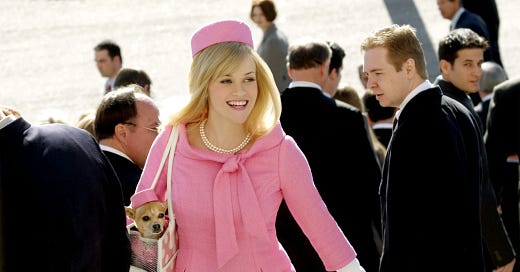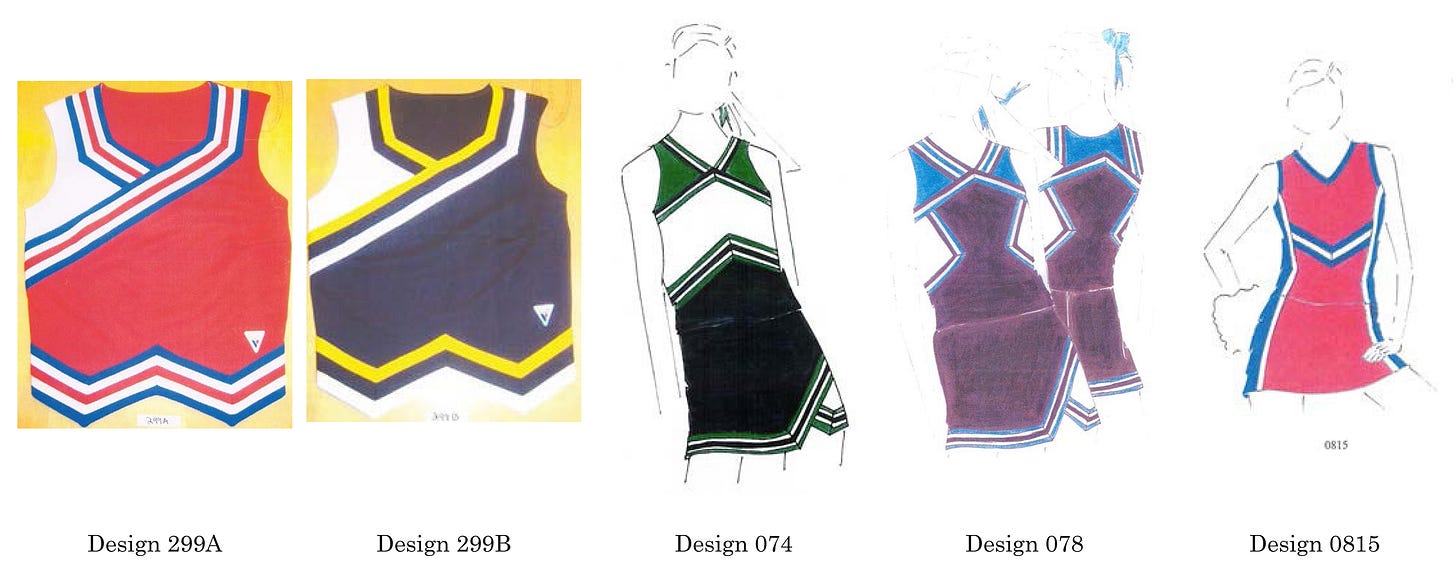Beyond the glamour, lies the law: by Sarah Dean author of Couture Counsel
Remember that iconic Dior "Bar" jacket? Coco Chanel's little black dress? These fashion staples weren't just trends; they were intellectual property, protected by law. But what happens when fast fashion giants copy these designs with impunity? Enter the world of Fashion Law, where creativity meets legal muscle.
What is Fashion Law?
Before you roll your eyes, fashion law isn't "Legally Blonde" but with better outfits.
Fashion Law isn't just about lawsuits and courtroom drama (though it can be!). It's a multifaceted field encompassing intellectual property rights, contracts, trade, finance, and even employment law. Think of it as the guardian angel protecting the "divine creators" of the fashion world - designers and brands.
Why isn't it just a petite section of copyright or trademark law? Simply because fashion is a colossal empire of its own. It involves design, manufacture, distribution, advertising, retail, and much more.
Each stage is fraught with legal potholes big enough to swallow a Jimmy Choo stiletto.
Why Fashion Needs its Own Courthouse:
The fashion industry is a $2.5 trillion behemoth, fueled by constant innovation and fleeting trends. But amidst the glamour, a dark side exists: counterfeiting. From knock-off handbags to copycat designs, these practices threaten the very identity and livelihood of designers. Fashion Law tackles this issue head-on, safeguarding creativity, investment, and intellectual property.
The question of authenticity and originality are vital. Brands spend years building their identity, and designers pour their soul into creating unique pieces. A design rip-off is like stealing a piece of their identity. That's why there's a pressing need for specialized law practice to protect the interest, investment, and intellect that goes into creating fashion.
The Fabric of Protection: Copyright, Patents, and Trademarks
While clothing itself isn't copyrightable, unique patterns, prints, and ornamental designs are. Remember the landmark "Star Athletica" case where cheerleading uniforms received copyright protection? This was a game-changer, setting a precedent for design originality.
In the landmark case of Star Athletica, LLC v. Varsity Brands, Inc., cheerleading uniforms were at the center of the legal universe. The Supreme Court ruled that the designs of the uniforms, including the chevrons and stripes, were separable and thus copyrightable. This case was a game-changer; it's like the fashion law equivalent of Coco Chanel introducing pants for women!
But we'd be amiss to think that copyright is the only queen in this law-fashion ballroom.
Patents play a role in protecting innovative construction and functionality, like Spanx's revolutionary shapewear design. And then there are trademarks, the fashion world's signature scents, like Nike's Swoosh or Chanel's interlocking Cs. These instantly recognizable symbols are fiercely protected, ensuring brand identity remains distinct.
And then there are trademarks. These are like the fashion labels' signature perfume, distinctive and instantly recognizable. Think of the Nike Swoosh or the interlocking Cs of Chanel; these logos are not just decorative elements but are trademarks that are rigorously protected by law. Trademarks allow brands to create a unique identity, not to be confused with a fleeting trend.
The USPTO and Copyright Office act as the gatekeepers, granting protection to eligible designs, patents, and trademarks. This legal framework, with its copyright, patent, and trademark threads, ensures creators are rewarded for their unique contributions.
And let's not forget the role of the United States Patent and Trademark Office (USPTO) and the Copyright Office. They are the bouncers at the exclusive fashion law club, determining who gets in (or gets protection) and who doesn't.
A Global Catwalk: Fashion Law Across Europe
Now, let's jet-set across the pond! Europe has its own unique legal landscape. The EU's Community Design Right protects both registered and unregistered designs, while France, the birthplace of haute couture, offers strong copyright protection for fashion designs. The UK leans more towards trademarks and brand identity. These varying approaches highlight the complexity and nuance of Fashion Law across the globe.
Modern Challenges and the Road Ahead:
The rise of 3D printing, digital fashion, and fast fashion throws new curveballs at Fashion Law. When does inspiration become imitation? How do we protect digital couture and ensure authenticity in the blockchain age? These are just some of the burning questions shaping the future of this dynamic field.
Fashion Law: More Than Just a Trend
Fashion Law isn't a passing fad; it's the backbone of an industry that's not just about aesthetics, but also about economics, culture, and yes, law. From protecting groundbreaking designs to preserving the legacy of iconic brands, Fashion Law plays a vital role in safeguarding creativity.
Join the Conversation!
What are your thoughts on Fashion Law and copyright protection? Are we doing enough, or is it time to redesign the system? Sashay your way into the comments and share your perspective!










This is a great summary of what fashion law entails and explains how far it extends beyond intellectual property.